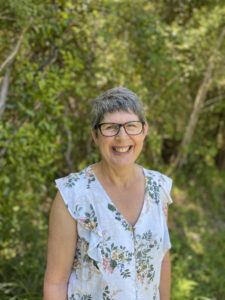With Barbara McMillan for ACSD Conference 2024
Miracles seem to me to rest not upon faces or voices or healing power coming suddenly near to us from afar but upon our own perception being made finer so that for a moment our eyes can see and our ears hear what is there about us always.” Willa Carther
An Exercise On Looking Close:
Nothing is more creative than nature, more evocative of creation and the creative process. Nature is
there to teach. But first we have to learn to look.
- Pick an object in nature.
- Sit quietly, let go of any preconceptions, and look with fresh eyes.
- Look at it to see what you can learn about it.
- A period of concentrated observation will often reveal to you what you didn’t see at all on
first glance. - Take at least 15 minutes to observe your natural object. Even if you get bored after 5 minutes
keep looking, and keep looking. - Forget about self and concentrate fully.
- Take note of everything you observe:
o Colour, texture ,smell, taste,
o Leaves, seeds, markings, divisions - After studying it for 15 minutes answer these questions:
o what else does it remind you of?
o does it remind you of anything in your own life?
o does it evoke any emotion, sensation, or thoughts in you?
o What conversation do you want to have with God about this? What questions do
you have?
o Allow time for God to speak to you in response. - Now, if you want to, share your insights with someone or capture your insights in writing.

Barbara McMillan

As a spiritual director, supervisor, and retreat leader, Barbara brings over 25 yrs experience at assisting people to develop relational connection with God, self and others. She is based at Treetops, a place of retreat focused on nourishment and reconnection set on 20 acres of re-wilding forest at Little River, Banks Peninsula.
“Clearing the way,” Barbara will draw on wisdom gleaned from the desert traditions and identify some of the habits we hide behind as substitutes for more genuine relating, and identify contemplative practices that assist us to transform these into relationship deepening virtues. Engaging beauty as a habitus of healing and wellbeing.
Sacred Wholeness
– Transforming Patterns Bibliography:
Brown, Christopher, Reflected Love. Companioning in the Way of Jesus. Wipf & Stock: Eugene, Oregon. 2012.
DeYoung, Rebecca Konynodyk, Glittering Vices. A New Look at the Seven Deadly Sins and their Remedies. BrazosPress: Grand Rapids: 2020.
Hall, Dr. Christopher A. Desert Spirituality. January 26 2023.
Interactive Virtue Tree:
Male, Ali, Desert Spirituality: Ancient Wisdom for Overcoming Vices with Virtues. August 11, 2024
Merrill, Nan C, Psalms for Praying. An Invitation to Wholeness, Continuum: New York 2009.
Okholm, Dennis, Dangerous Passions, Deadly Sins. Learning from the Psychology of Ancient Monks. Brazos Press. 2014
Oldfield, Elizabeth, Fully Alive. Tending to the Soul In Turbulent Times. Grand Rapids: BrazosPress. 2024.
Peterson, Christopher & Seligman, Martin E.P., Character Strengths and Virtues. A Handbook and Classification. Oxford University Press: New York. 2004
Robert, Robert C, Spiritual Emotions. A Psychology of Christian Virtues. Eerdmans: Grand
Rapids 2007
Exercise:
- tell me what is beautiful in your life?
- What do you find beautiful about your work?
- In your daily life, do you include practices that connect you with beauty insome way?
- When you have the experience of beauty that you have described (with God,
- with others, with nature, etc.) what effect does that have on you?
- What effect does it have on your relationship with God?
- Do you have ways that help you stay connected with the experiences of beauty?

